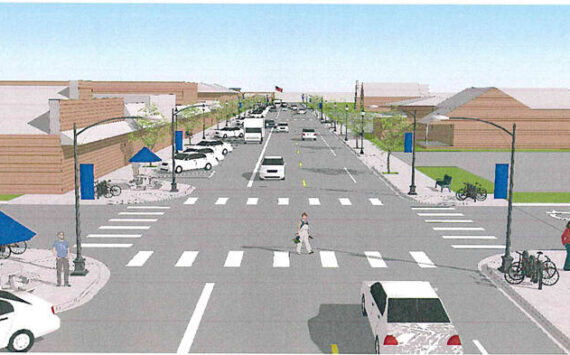Tonasket has gone two summers without its city swimming pool, but momentum only now seems to be gaining on a plan for replacing it.
The question that has yet to be answered is, are area residents truly willing to support the building and maintenance of a pool?
Emotionally, the answer seems to be, “Yes,” especially amongst families with kids. In practical terms, that’s not so clear.
There seems to be a community expectation that the city should try to get the pool rebuilt, but the City Council has resisted taking sole responsibility for the project. While the pool was a city attraction, it was utilized by more than just city residents. Not only that, but as the city annually sees its budget tighten, sustaining critical services like police protection and water/sewer infrastructure have become more difficult even without the cost of a pool.
The council tried to encourage the formation of a pool committee in the broader community, but until recently those efforts have come in fits and starts. Finally, thanks to City Planner Kurt Danison, the council authorized a study that provided a number of options for pool designs, along with estimated costs.
While getting the pool itself built at a cost range of $1-2.5 million is a big enough task to take on (witness Linda Black’s Herculean effort to raise less than a tenth of that for the privately-funded Tonasket Water Ranch), the more complicated question is: how will the maintenance of a new pool be funded?
The pool wouldn’t truly be an asset, but a financial liability. Council member Scott Olson has said repeatedly that even if a new pool dropped into the ground free and clear, the city should not agree to take it on unless maintenance costs are accounted for.
Danison pointed out that if public swimming pools made money, there would be a lot more of them being built. Many public pools have been closed because of the inability to keep up with maintenance costs. He estimates that the annual cost of a short season outdoor pool would be $25-40,000. User fees might keep that number at the low end, but charging enough to cover those costs entirely would price many families out of being able to use it often. Toeing that line would also mean many years of getting by with just minimal maintenance, setting the city up for the kind of infrastructure failure that caused the current pool to be condemned.
The council noted during one budget session last fall that in 2013, the city probably would not have had enough money to keep the pool open.
(An oft-discussed indoor, year-round pool would cost in excess of $300,000 a year to maintain. Danison cites the need for year-round employees, higher energy costs, the addition of sophisticated air handling equipment and need to plow or shovel to ensure winter access as reasons for this. The council has repeatedly drawn a hard line against taking on that kind of liability.)
What does that mean to Joe or Jane Landowner? If city voters passed a property tax levy to fund a $30,000 pool maintenance bill, it would cost property owners $0.67 per $1,000 of property valuation (a property valued at $100,000 would see its taxes go up by $67 a year).
If a Parks and Recreation district were formed that would share the costs with a larger community for example, encompassing the same footprint as the Tonasket School District – it could fund that maintenance for under $0.07 per $1,000. Getting such a district formed, though, is a lengthy process of its own that also requires voter approval.
There are other ways to come up with that money, but unless an endowment fund magically appears, those ways all involve a hike in local taxes. And that always plays so well at the local ballot box.
Tonasket wants its swimming pool; but is Tonasket willing to pay for its swimming pool? Until that commitment is secured, it’s best for all to proceed with great caution.



